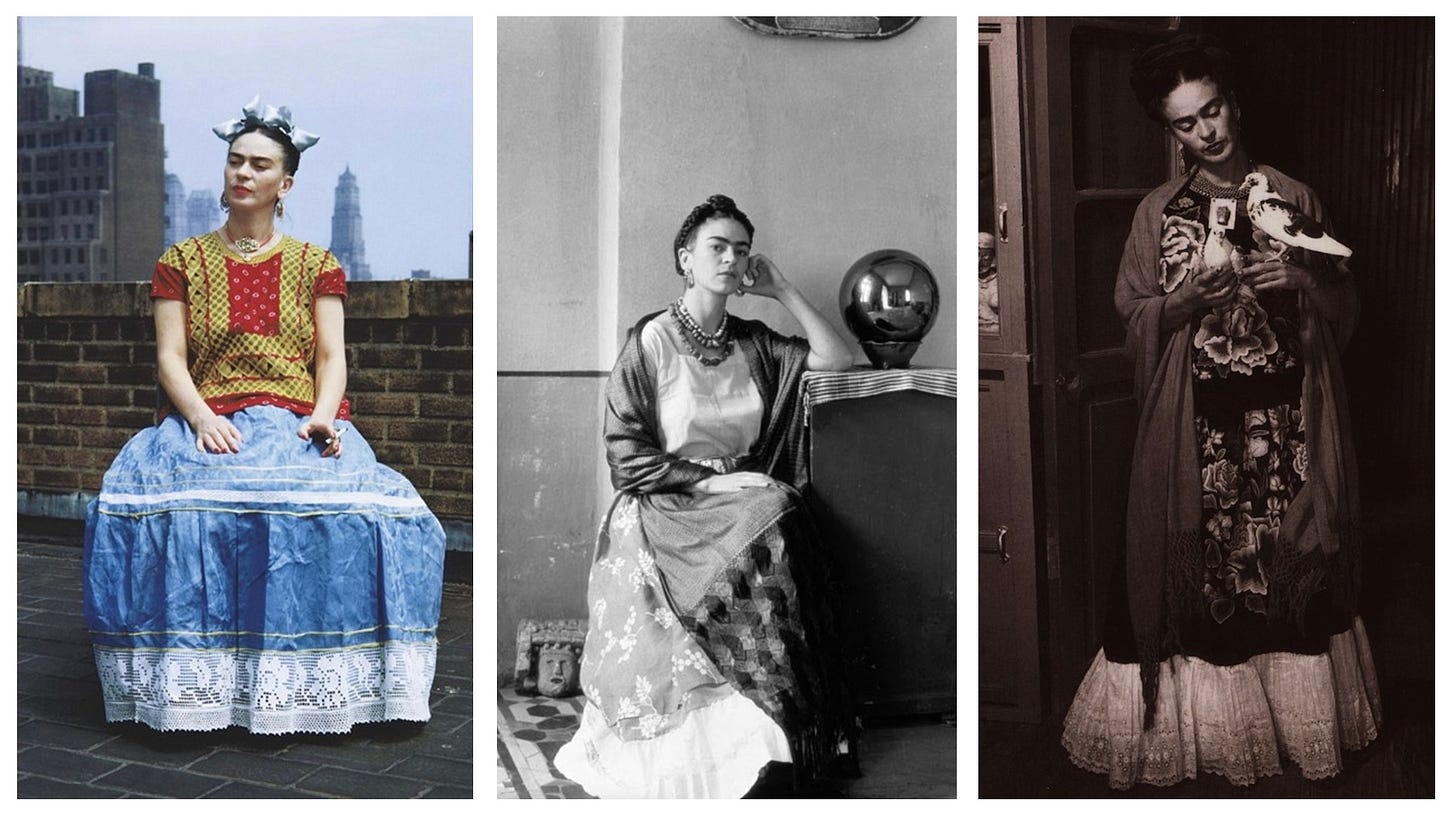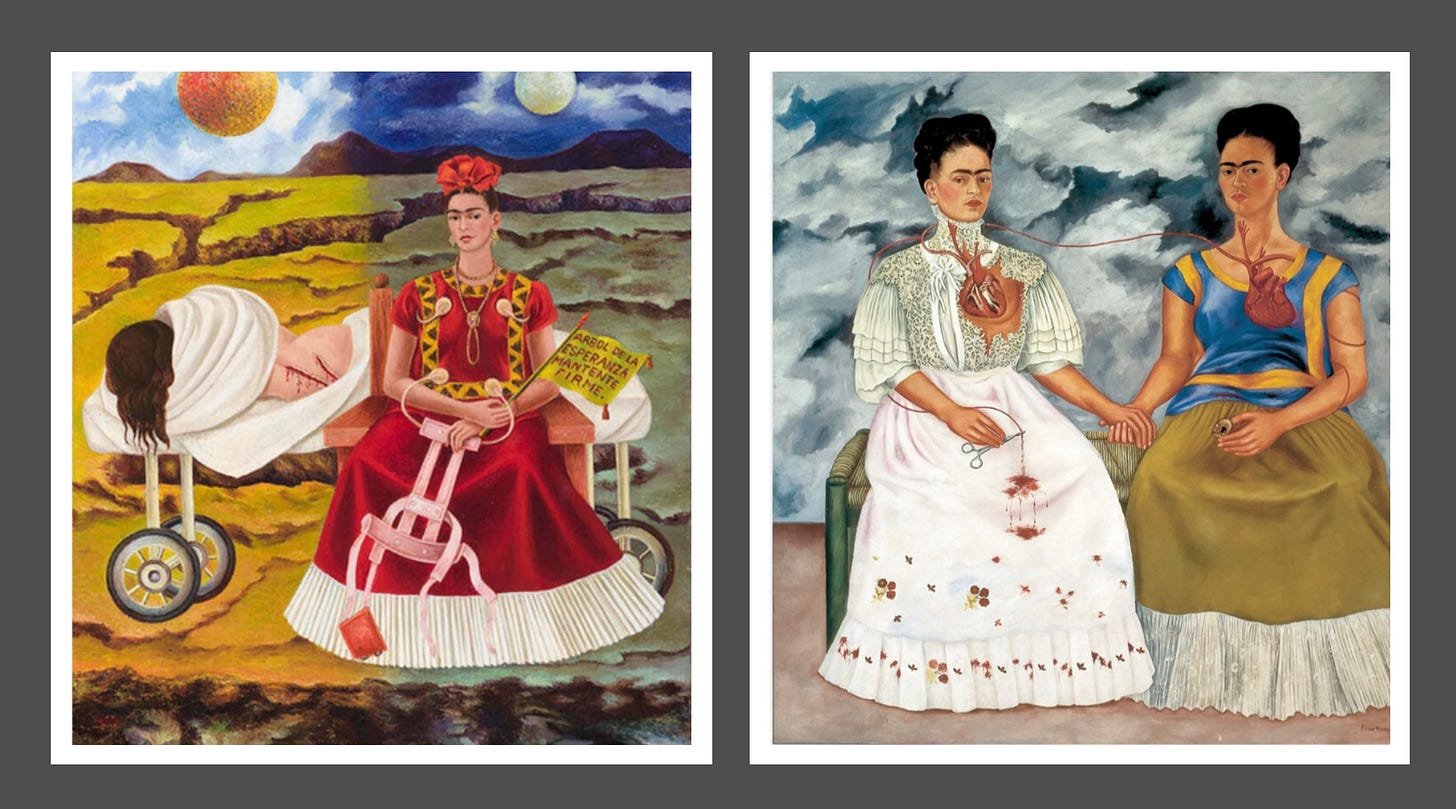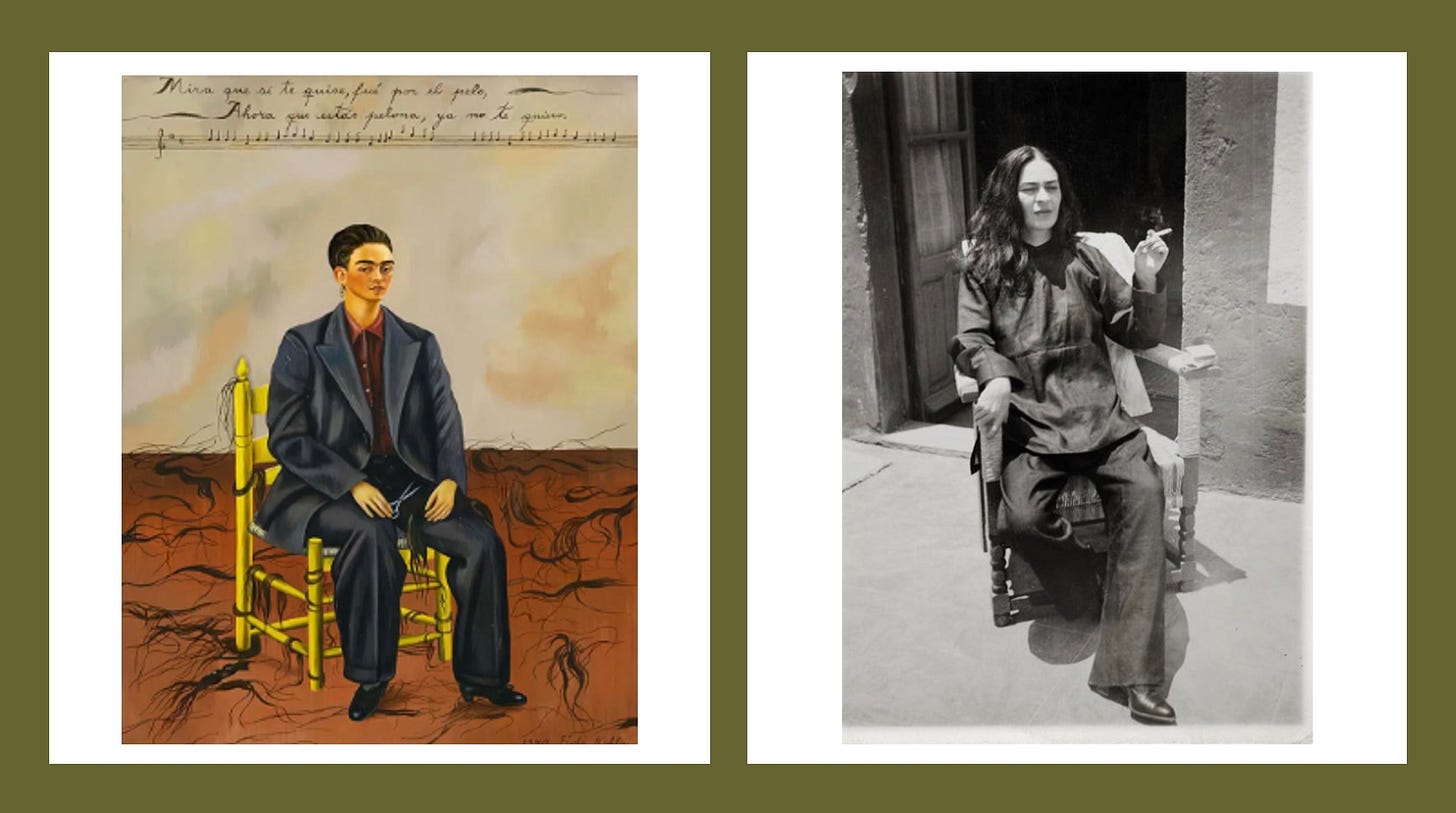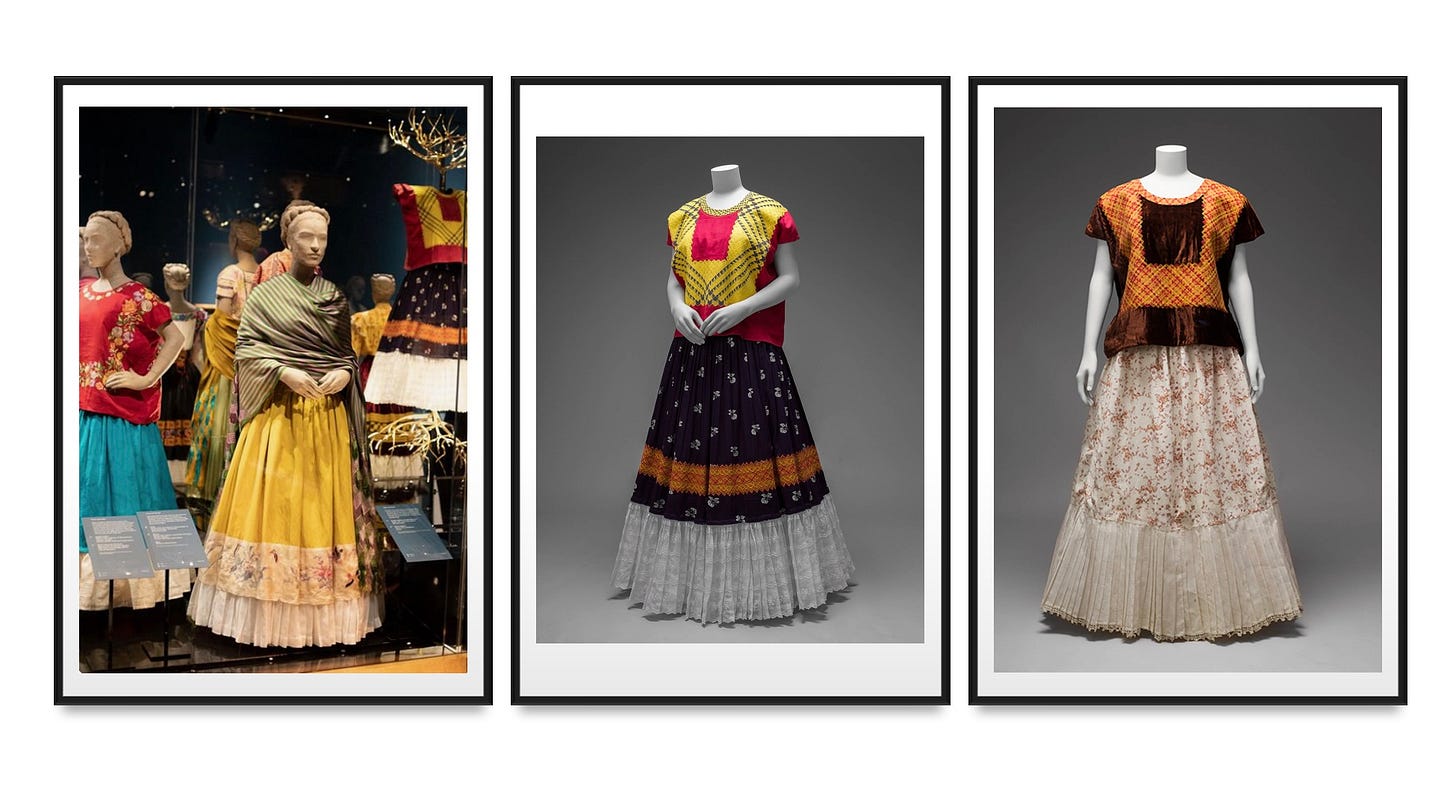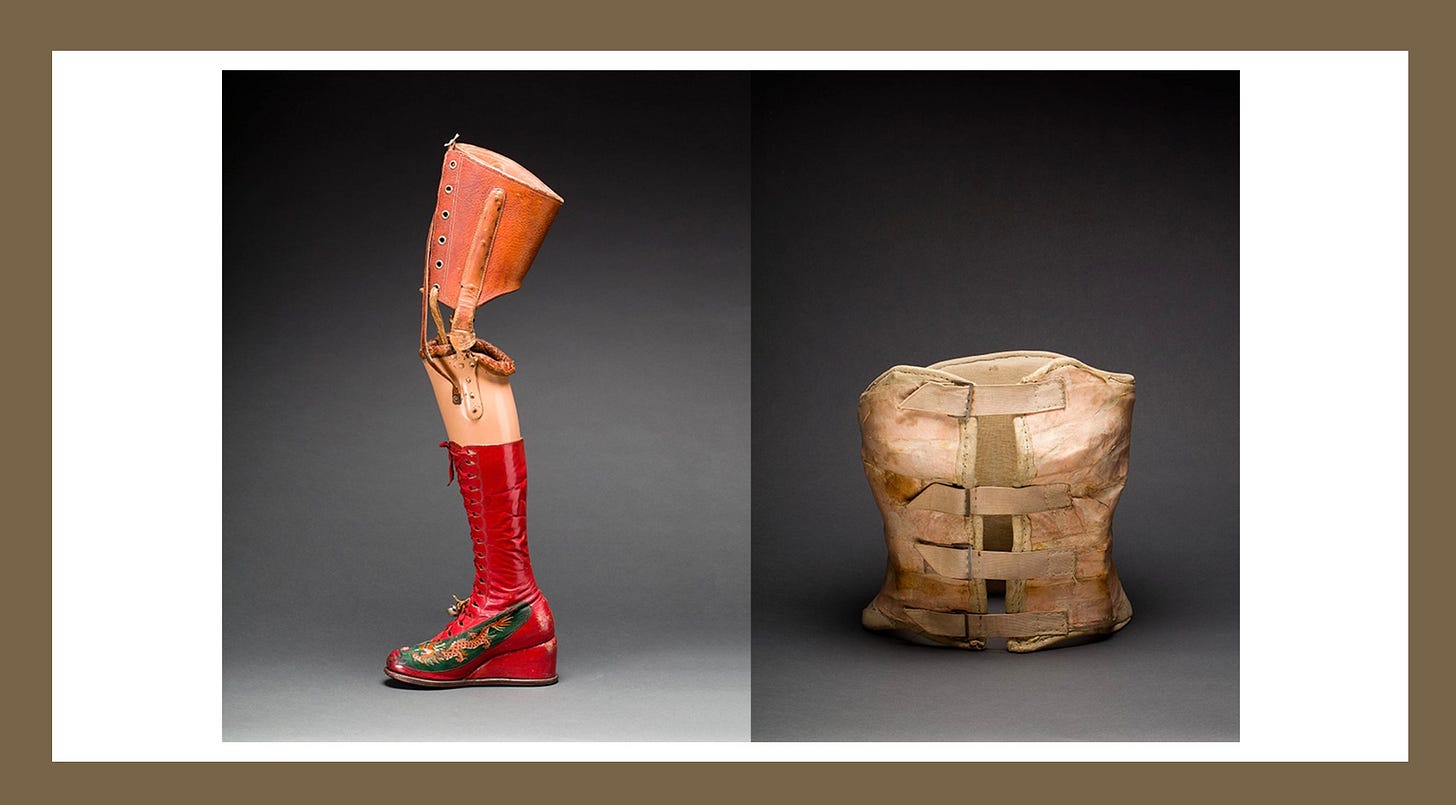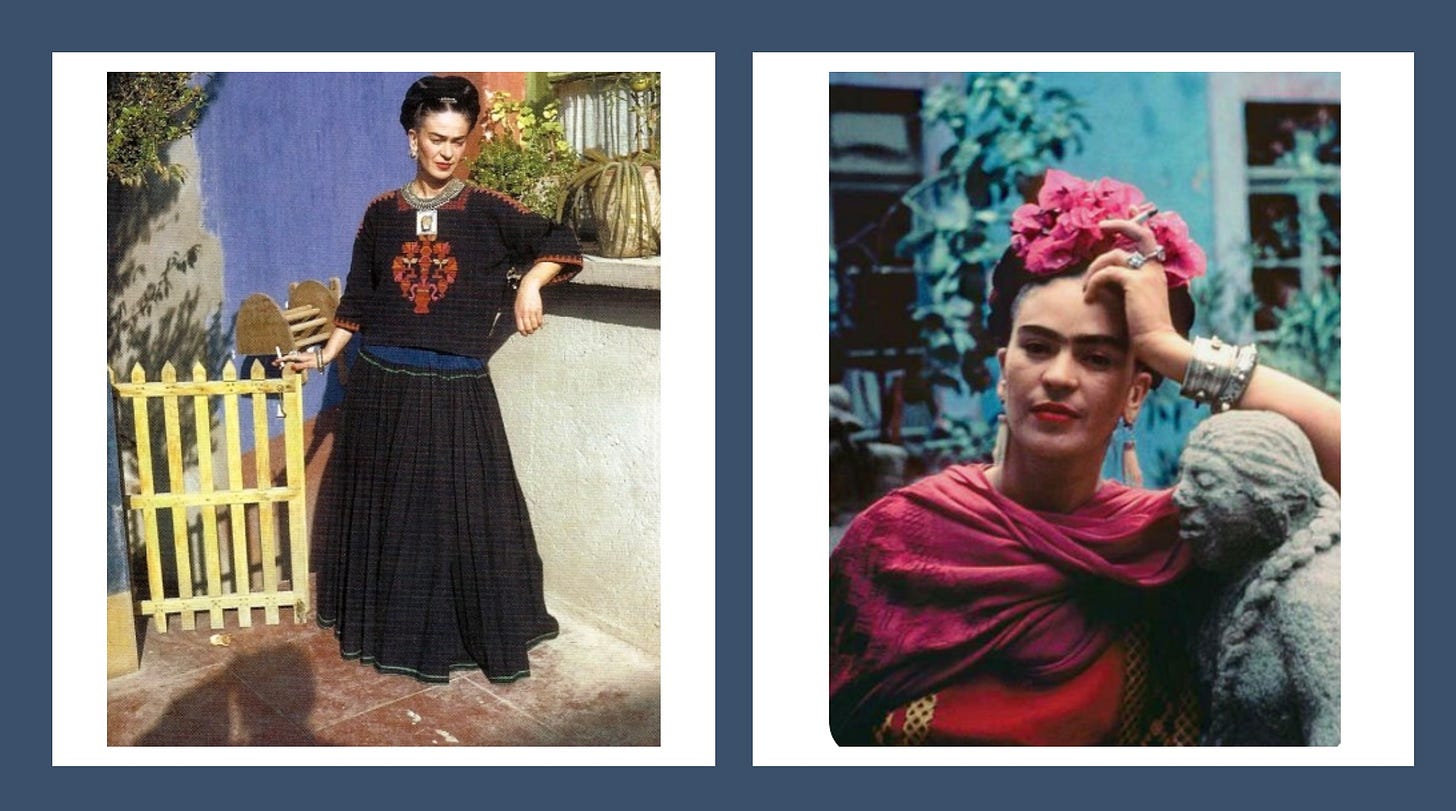If given the chance, there are a few people from the past I would love to sit across from and have a conversation with. One person sits at the top of my list whose life stories I would love to hear: Frida Kahlo. This woman has made a lasting name for herself in the cultural zeitgeist by being one of the most accomplished women artists, and on top of that, a fashion icon in her own right. In this post, I am going to explore Frida’s complicated life as a woman and an artist to show how she overcame many personal struggles through her artistic self-expression.
To say Frida had a challenging life is an understatement. For one, her love life was complicated. Diego, her husband, was a famous muralist, and throughout their relationship, Frida oftentimes struggled to find her footing as an artist. She never felt like she was taken seriously for her work. From letters that she wrote, she expressed that she did not see herself as special and believed her life to be mundane. She also struggled with feelings of jealousy and self-doubt, which stemmed from her marriage. Expressing that she felt lazy and unintelligent, she believed she was never good enough. On top of her imposter syndrome, she also navigated the hardship of many miscarriages, to the point where she eventually had to abandon all hope of being a mother. By studying her paintings, it’s clear that Frida found strength and courage within herself to navigate all the hardships of being a woman during her time. She used painting to humanize her personal experiences as well as bring a deeper understanding to the viewer about the pain of her life. What makes Frida’s paintings so unique is the unconventional symbolism and graphics connected to deeply personal and vulnerable self-images. She says about her own art: “they thought I was a surrealist, but I wasn’t. I never painted dreams. I painted my own reality.”
A painting that has always stood out to me is entitled Cropped Hair (1940). In this painting, Friday paints herself wearing a men’s suit with literally cropped hair. She painted this portrait out of a tumultuous time in her life. She was going through a divorce because she discovered Diego’s many adulterous affairs. It has also been said that Diego was abusive. This painting depicts her grieving process, as she coped with all that she had lost from this relationship. As an artist, she was defined by her relationship with Diego. He is the one who put her art into the public eye and gave her a platform for her success. As this was a very complicated time in Frida’s life because she cut ties with her lifeline, she needed to rediscover her personal identity. Depicted wearing a suit, with short hair, and sitting in a more masculine stance, Frida was able to position herself as an independent and powerful individual. In some ways, her art was all Frida had to express female autonomy. For a woman of her time, it was important that she changed her image to be more masculine as a way to express her independence and strength. What Frida asks us to consider is why she needed to be perceived as more masculine to emulate power? What this shows is that Frida’s art challenges viewer’s perceptions of women’s appearance and clothing through her reimagination of the self.
“Pain, pleasure and death are no more than a process for existence. The revolutionary struggle is the process is a doorway open to intelligence.”
Beyond her personal relationship, Frida had a life-altering accident that informed her art and fashion choices. In September of 1925, when Frida was 18 and on her way home from school, the bus she was riding crashed into a tram. A metal handrail struck through her pelvis. It is said that a fellow artisan was sitting on the bus next to her carrying a bag of gold dust, and on impact, the gold dust spread into the air and settled onto Frida’s broken body. It was as if she was being kissed by a spiritual force. Her life was changed forever, and this accident is what set Frida on her life’s course. While she recovered, she painted as a coping mechanism. She was bedridden and a mirror was mounted onto her ceiling where she would look at herself and paint portraits we know today. The famous iconography and imagery in her paintings were ways for her to express the deep pain and emotions she felt about her situation. Her clothing, that most people are familiar with, is indeed linked closely to her heritage, but it was also informed by her disability. She famously had to wear plaster corsets to keep her organs in place and her torso stable so she could eventually walk and have as normal of a life as possible. There are photos of her painting directly onto these corsets, turning even a medical device into a piece of art. One of her most famous pieces called “The Column” references her relationship with her medical corset.
"I am not sick. I am broken. But I am happy to be alive as long as I can paint."
It is important to set up the details of Frida’s life and lifestyle to dive into her clothing that makes her such an icon today. Her clothing choices, as said before, were greatly influenced by her disabilities. When she was a child, she had polio and one leg was shorter than the other, so she wore long skirts to hide this. She would wear three or four socks and a shoe with a built-up heel to help conceal the imbalance. The geometric square blouses, intricately embroidered, and her beautiful shawls, known as rebozos, would help conceal the plaster corsets she wore underneath that aided her ability to stand and move. She wore beautiful, colored beaded necklaces, some she strung together and made herself, and ribbons and flowers in her hair to lift the gaze to her head and face to take away from the decay of her body. Her very famous unibrow has been speculated that this was also a way to keep the viewer’s gaze on her face. She even used makeup to enhance the unibrow. It is documented that she used an ebony eyebrow pencil to emphasize her signature monobrow. This was paired with her favorite lipstick, Revlon’s “Everything’s Rosy” to create a glowing, beautiful face. She thought that mustaches and unibrows were very attractive, which is why she incorporated this into her personal look.
Her clothes were derived from the traditional Tehuana dress, which originates in Oaxaca, a south-easterly region of Mexico. By dressing this way, she expressed her Tehuana ethnic roots on her mother’s side, a statement that sent a message of self-determination for the indigenous people of Mexico. Throughout her life, she did not stray from this way of dressing even as the fashion changed for women in the 1920s and 1930s. Throughout her life, she incorporated her artwork into her clothing. She customized pieces with a tailor to create her famous silhouette. She would take fabrics to her tailor and have them add ruffles to skirts and embroider blouses and create beautiful jewelry that she would layer and adorn herself with. In 1953, she was diagnosed with gangrene in her left leg and had to have it amputated. She wore a prosthetic leg for the last year of her life. She put a beautiful red leather boot on her prosthetic leg and painted a Chinese dragon onto the boot, once again customizing her clothing to make her decaying body a piece of art. By adorning herself in the most beautiful clothing and textiles and jewelry, Frida created an image of an able-bodied woman with a colorful and exuberant life, giving her the personal identity she is known for today.
I really believe Frida’s feminist art speaks on the pain of womanhood. Her wrestling with her personal, everyday life has become such a beacon. If you truly did a deep dive on Frida and went past the commercial image that has been created of her from t-shirts and mugs to puzzles and tote bags, you would find a complicated women who had the courage to speak and paint the most inner workings of her thoughts and feelings, making it accessible to an audience ready to listen and absorb and relate. If I was sitting across from Frida, after hearing all her stories, I would thank her for her courage to push beyond her fears and obstacles to authentically express herself through her art and life. I would thank her for baring her soul so deeply, teaching us how to express difficult, complicated emotions in order to find true self-acceptance. I would tell her that through her work, I have found healing and solace from my own life’s journey.
If you want to see a beautiful retelling of Frida’s life and these experiences discussed above, I highly recommend watching Frida, the 2002 film starring Salma Hayek. I think it is a beautiful, romanticized retelling of her life and story. Many people have criticized it, saying that the film made Frida’s life too spectacular and colorful, but I think that Frida would have loved this film if she saw it. It captures her essence and energy and her deep pain and emotional journey, all while celebrating the beautiful color and vibrancy that come from her paintings. The costume design is worth mentioning by the great Julie Weiss, who did a beautiful job recreating all the pieces worn by Frida in her lifetime.
When the state of the world feels scary and the unknown is daunting, it does feel necessary to turn to art and make art with your community. Many artists have leaned into their art when the world and trials of life feel too heavy. Art has been cathartic and therapeutic for many people, giving us an avenue to express their struggles, their identity. It also brings us together where we can find people to relate to as they express their own healing. This project with Katerina has been the greatest outlet during this challenging time. It is a safe space where we get to create and express our hopes and dreams. We are creating in a medium we both enjoy where we are not afraid to make mistakes, knowing that even in the imperfect parts of this project, we are finding ourselves as artists even more so. Frida painted when she felt pain and loss and reminds us that: “at the end of the day, we can endure much more than we think we can.”
Thank you to Elisa Fuhrken for editing




